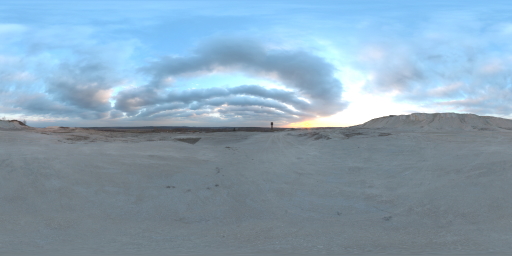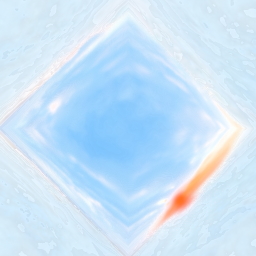A tool for generating GGX convoluted octahedron mapped textures from cylindrical hdr images.
- Load source ktx texture.
- Create a destination texture with user specified count of mip levels.
- Lower mip levels will be used to store higher levels of convolution.
- Per mip level convolution compute pass.
- Select mip level & apply level roughness value.
- Decode uv coordinate from octahedron space to a direction.
- Peform 200000 samples of monte carlo integration using Hammersley point distribution.
- Get a GGX Importance sample direction using the distributed point & level roughness value.
- Encode sampled direction into cylindrical uv coordinates.
- Gather a sample from source texture & apply Lambert's cosine law.
- Encode integrated color into rgbm.
- Read processed image back from gpu & save as ktx.
To run the program via terminal the following arguments need to be submitted.
- Source texture file name.
- Destination texture file name.
- Destination encoding mode (RGBM, RGB16F, RGB9E5)
- Destination resolution (clampped to 2048).
- A set of roughness levels.
- As this will double as the number of mip levels the destination resolution might increase if the supplied one cannot support the desired amount of levels.
./OEMExporter.exe Source.ktx Destination.ktx 512 "{0.1, 0.2, 0.5, 1.0}"
The following code snippet can be used to sample the generated image.
uniform sampler2D _SceneOEM;
// As of now the hdr mutliplier is hardcoded to 8.0. This might be parameterized later.
#define HDRFactor 8.0
// If texture is rgbm encoded
vec3 HDRDecode(vec4 hdr) { return vec3(hdr.rgb * hdr.a * HDRFactor); }
vec2 OctaWrap(vec2 v) { return (1.0 - abs(v.yx)) * vec2(v.x >= 0.0 ? 1.0 : -1.0, v.y >= 0.0 ? 1.0 : -1.0); }
vec2 OctaEncode(vec3 n)
{
n /= (abs(n.x) + abs(n.y) + abs(n.z));
n.xz = n.y >= 0.0 ? n.xz : OctaWrap(n.xz);
n.xz = n.xz * 0.5 + 0.5;
return n.xz;
}
vec3 SampleEnvironment(vec3 direction)
{
vec2 uv = OctaEncode(direction);
// Note that if your roughness levels do not scale linearly you need to remap the lod bias value to correspond with your setup.
return HDRDecode(textureLod(_SceneOEM, uv, roughness * 4));
}

